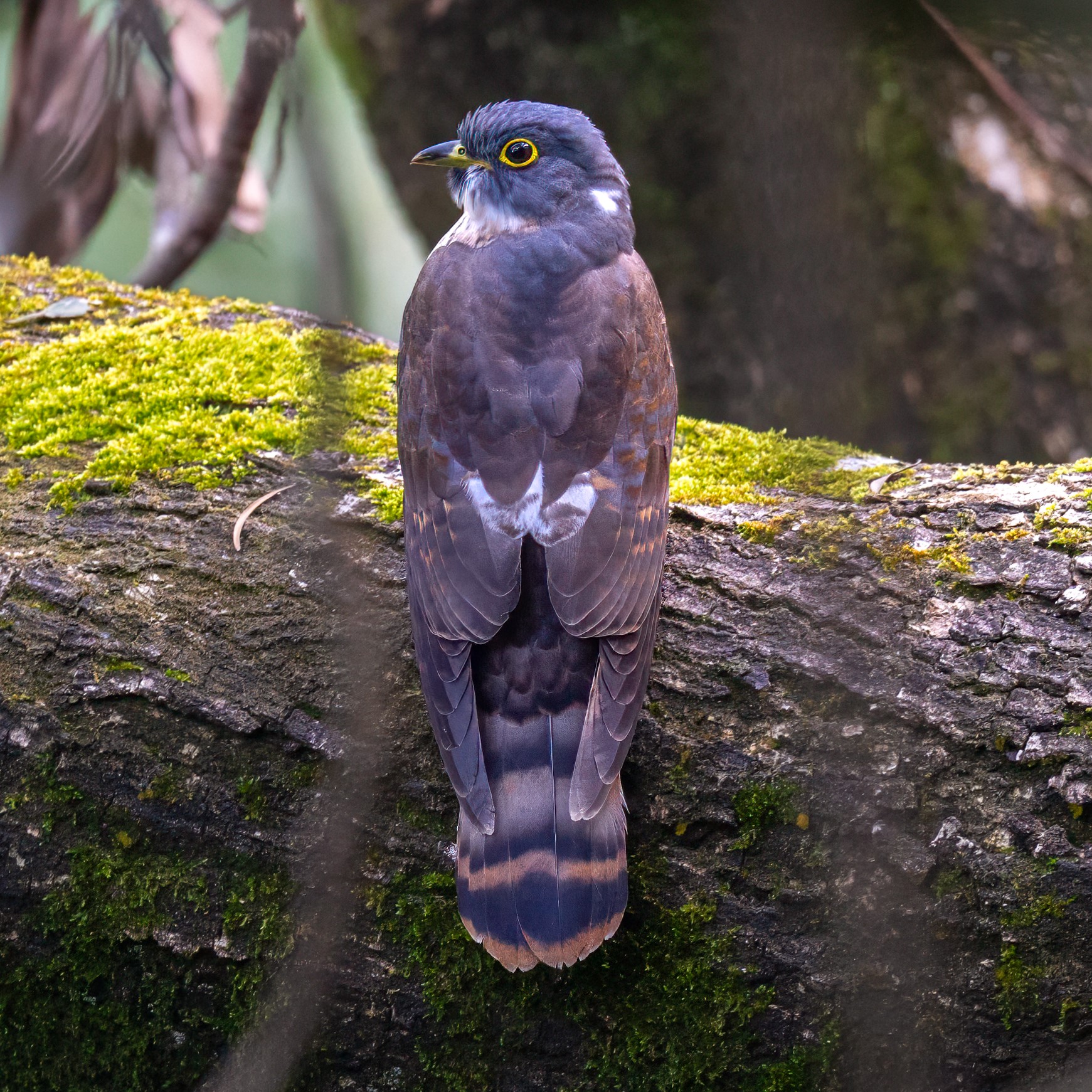Northern Hawk-Cuckoo Hierococcyx hyperythrus 北鷹鵑
Category I. Rare autumn migrant.
IDENTIFICATION

Oct. 2023, Robert Hackel. Juvenile.
38-40 cm. A moderately large cuckoo with a slate-grey or sooty-black hood and prominent bright yellow eye-ring. Superficially similar to Hodgson’s Hawk-Cuckoo but larger and separated by the colour and pattern of the underparts and tail. On adults, the underparts are solidly grey-pink with no obvious streaking and the bars on the uppertail between the base of the tail and the subterminal bar are relatively narrow.
On juveniles/first-winters (illustrated) the underparts are white with blackish streaking, and the tip of the tail and the pale bar immediately above the broad dark subterminal bar are both brownish, which separates from Hodgson’s Hawk-Cuckoo (see Leader 2011).
VOCALISATIONS
Not reported in HK.
DISTRIBUTION & HABITAT PREFERENCE
Records are from the northern and southeast New Territories, and Po Toi island, mostly in areas with extensive shrubland.
OCCURRENCE
The records involved single juvenile or first-winter birds from 9 September to 27 October.
1971: trapped in Clearwater Bay and released on 27 October (Webster 1972, Leader 2011).
1996: found injured on 29 September 1996 at Fanling when it was taken into care at KFBG and released on 8 October 1996.
1998: Po Toi on 13 October.
2014: Mau Ping, Ma On Shan CP on 9 September.
2015: Gilwell Campsite, Ma On Shan CP on 25 October.
BEHAVIOUR, FORAGING & DIET
No observations.
RANGE & SYSTEMATICS
Monotypic. Breeds in northeast China, Korea, the Russian Far East, Sakhalin and Japan (Payne 1997); its wintering grounds are poorly known but include parts of Borneo and Sulawesi, with birds also reported on spring passage in southern Vietnam (Eaton 2018). In China, it is a summer visitor to the northeast with occasional records of birds on passage in the east and southeast (Cheng 1987) and was recently recorded on passage in Hainan (Lewthwaite et al. 2021). Contrary to Cheng (1987), who stated that it was a winter visitor to Guangdong and Fujian, apparently on the basis of October records, no winter records are known from these provinces.
CONSERVATION STATUS
IUCN: Least Concern. Population trend stable.
Cheng, T. H. (1987). A Synopsis of the Avifauna of China. Science Press, Beijing.
Eaton, J. A. (2018). Identification of hawk cuckoos, and the first record of Northern Hawk Cuckoo Hierococcyx hyperythrus for continental South-East Asia. BirdingAsia 30: 68-73.
Leader, P. J. (2011). The Status and Identification of Hodgson’s and Northern Hawk-cuckoo in Hong Kong. Hong Kong Bird Report 2007-08: 347-359.
Lewthwaite, R. W., F. Li, and B. P. L. Chan (2021). Online Supplement to “An annotated checklist of the birds of Hainan Island, China”. Available at https://www.kfbg.org/images/download/hainan-bird-checklist-supplement.pdf.
Webster, M. A. (1971). Systematic List 1971. Hong Kong Bird Report 1970-1971: 39-69.

